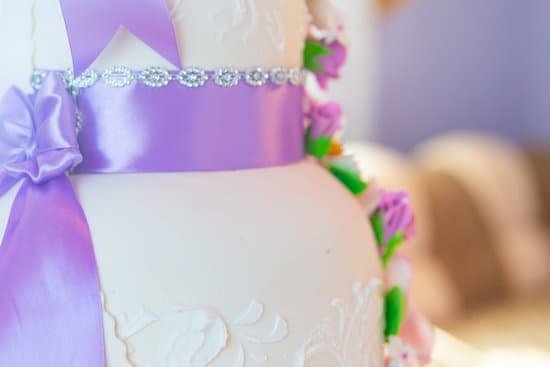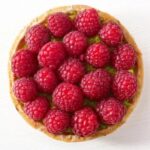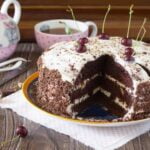Cake decoration has long been an intricate and essential part of the baking world. From birthdays to weddings, a beautifully decorated cake adds that extra touch of magic to any special occasion. And when it comes to creating stunning designs, one tool stands out – Patchwork Cutters. These innovative cutters have revolutionized cake decorating, allowing both professionals and hobbyists to bring their cake creations to life with ease.
In this article, we will delve into the world of Patchwork Cutters for cake decorating, exploring their history, types, techniques, benefits, and much more. But first, let’s talk about why cake decoration is so important.
The art of cake decorating not only adds visual appeal but also conveys emotions and messages through carefully crafted designs. Whether it’s a simple floral pattern or an elaborate themed cake, the decoration sets the stage for celebration and leaves a lasting impression on guests.
Enter Patchwork Cutters – a game-changer in the world of cake decoration. With their precise cutting edges and intricate designs, these cutters take your creations from ordinary to extraordinary. They offer a wide range of options – from delicate floral patterns to bold geometric shapes – allowing you to create unique designs that match any theme or occasion. Plus, they are easy to use and require minimal effort for clean and precise cuts.
So whether you’re a seasoned baker looking to level up your decorating skills or a newbie venturing into the world of cakes, Patchwork Cutters are a must-have tool in your arsenal. In the following sections of this article, we will dive deeper into their history, explore different types and techniques, provide useful tips for using them effectively, showcase popular designs, troubleshoot common challenges, and ultimately inspire you to unleash your creativity with these incredible tools.
Let’s get started.
A Brief History of Patchwork Cutters
Patchwork Cutters have become a staple tool in the world of cake decorating, allowing bakers and decorators to elevate their creations with intricate designs and details. The history of Patchwork Cutters dates back several decades, with their popularity steadily growing among professionals and hobbyists alike.
The origins of Patchwork Cutters can be traced back to the 1980s when Marion Frost, a cake decorator from the United Kingdom, developed the idea. Marion was inspired by patchwork quilting and wanted to create a way for cake decorators to easily incorporate similar patterns into their designs. She began experimenting with different techniques and materials until she came up with a method that allowed her to transfer intricate designs onto cakes using cutters made from food-safe materials.
As word spread about Marion’s innovative creation, more and more people started using Patchwork Cutters in their own cake decorating endeavors. The ability to add texture, detail, and dimension to cakes quickly became appealing not only to professionals but also to home bakers looking to create impressive designs. With time, Patchwork Cutters gained recognition in the cake decorating community as an indispensable tool for achieving beautiful and unique creations.
Over the years, Patchwork Cutters have evolved in terms of design variety and functionality. What started as simple geometric shapes has expanded into a wide range of intricate patterns, floral designs, character motifs, and themed sets. Today, decorators can find Patchwork Cutters that cater to almost any theme or occasion.
Types of Patchwork Cutters
Patchwork Cutters offer a wide range of designs and patterns that cater to various cake decorating needs. Whether you’re looking to create elegant floral designs or intricate patterns, there is a Patchwork Cutter for every occasion. These cutters are specifically designed to enhance the overall look of your cakes in a unique and creative way.
One popular type of Patchwork Cutters is the floral designs. These cutters allow you to create stunning flower arrangements on your cakes with ease. From roses and daisies to lilies and orchids, you can embellish your cakes with lifelike and detailed flowers that will impress any guest. The floral Patchwork Cutters typically come in sets, allowing you to mix and match different flowers to create a bouquet-like effect on your cake.
In addition to floral designs, Patchwork Cutters also offer a wide variety of intricate patterns that can transform any plain cake into a work of art. From lace patterns and filigree designs to geometric shapes and abstract motifs, these cutters allow you to easily add depth and dimension to your cakes. The intricate patterns can be used as borders or as larger decorative elements, giving your cakes a professional touch.
What sets Patchwork Cutters apart from other cake decorating tools is their unique features that make them perfect for cake decoration. Firstly, the cutters are made from high-quality food-grade plastic, ensuring that they are safe for use on edible creations.
Secondly, they are designed with sharp edges that deliver clean and precise cuts, resulting in flawless detailing on your cakes. Lastly, Patchwork Cutters are easy to use – simply roll out your fondant or gum paste, press the cutter firmly onto the surface, then carefully remove it to reveal the intricate design.
No matter what design or pattern you have in mind for your cake decoration project, there is likely a Patchwork Cutter available that can help bring your vision to life. With their wide range of options, from floral designs to intricate patterns, and their unique features that ensure clean and precise detailing, Patchwork Cutters are the perfect tool for enhancing the final design of your cakes.
So why settle for plain and basic cake decorations when you can easily elevate your creations with these versatile and creative tools?
Tips for Using Patchwork Cutters
Using Patchwork Cutters for cake decorating may seem intimidating at first, but with the right techniques and practice, you can achieve clean and precise designs effortlessly. Here are some step-by-step instructions and tips to help you effectively use Patchwork Cutters:
- Preparation: Before starting, make sure you have all the necessary tools and materials. This includes a rolling pin, cornstarch or powdered sugar for dusting, a non-stick surface mat or parchment paper, a sharp knife or scalpel, and of course, your Patchwork Cutters.
- Roll out the fondant: Start by rolling out your fondant to a thickness of about 1/8 inch. Dust the rolling pin and surface with cornstarch or powdered sugar to prevent sticking.
- Press the cutter into the fondant: Press the selected Patchwork Cutter firmly into the rolled-out fondant to create an impression. Make sure to apply even pressure throughout.
- Remove excess fondant: Carefully lift the cutter off the fondant without lifting any of the details created by the cutter. Use a sharp knife or scalpel to trim away any excess fondant around the edges.
- Lift and transfer: Gently lift your cut-out design using a palette knife or spatula while supporting it from underneath with your hand. Transfer it onto your cake or cupcake surface and press it down lightly.
- Finishing touches: If desired, you can add additional details using edible food coloring pens, dusting powders, lustre sprays, or even piped royal icing.
Tips for achieving clean and precise designs:
- Use a good quality fondant or gum paste that is firm enough to hold its shape when cut.
- Avoid applying too much pressure when pressing down on the cutter to prevent stretching or distorting the design.
- Work quickly but carefully when transferring the cut-out design onto your cake to avoid smudging or misplacing it.
- Clean the cutter immediately after use to prevent fondant residue from drying and sticking to the cutter, which may affect future designs.
By following these tips and practicing regularly, you will soon master the art of using Patchwork Cutters for cake decorating and create beautiful designs that will impress your friends and family. Remember, practice makes perfect, so don’t be discouraged if it takes a few tries to get the hang of it.
| Tips for Using Patchwork Cutters |
|---|
| 1. Preparation: Before starting, make sure you have all the necessary tools and materials. |
| 2. Roll out the fondant: Start by rolling out your fondant to a thickness of about 1/8 inch. |
| 3. Press the cutter into the fondant: Press the selected Patchwork Cutter firmly into the rolled-out fondant to create an impression. |
Benefits of Using Patchwork Cutters
Using Patchwork Cutters for cake decorating comes with a multitude of benefits that set them apart from other cake decorating techniques. Whether you are a professional baker or a hobbyist, Patchwork Cutters offer several advantages that can enhance your cake designs and make the process more enjoyable.
- Time-saving: One of the biggest advantages of using Patchwork Cutters is how much time they can save compared to other cake decorating methods. Instead of spending hours creating intricate designs by hand, you can simply press the cutter into the rolled icing or fondant and achieve clean and precise shapes effortlessly. This is especially beneficial when you have multiple cakes to decorate or are working on tight deadlines.
- Effortless intricate details: Patchwork Cutters allow you to easily add intricate details to your cake designs without the need for advanced piping or painting skills. The cutters come in various patterns, such as lace, filigree, and floral motifs, which can instantly transform a plain cake into a work of art. Whether you want delicate flowers or elaborate lace borders, these cutters provide an easy way to achieve professional-looking results.
- Professional-looking cakes: Patchwork Cutters give your cakes a polished and professional appearance, even if you are not an experienced decorator. The intricacy and precision offered by these cutters elevate your cake designs and make them look like they were created by a skilled pastry chef. With minimal effort, you can create visually stunning cakes that will impress both clients and guests.
Top Patchwork Cutter Designs
Patchwork Cutters offer a wide variety of designs that can elevate any cake decoration to the next level. These intricate cutters are not only popular among professionals in the cake decorating industry but have also gained significant attention from hobbyists. In this section, we will showcase some of the most popular and visually appealing Patchwork Cutter designs, accompanied by images and descriptions of how they can be incorporated into various cake themes.
One highly sought-after Patchwork Cutter design is the floral collection. From delicate roses to vibrant sunflowers, these cutters allow bakers to create stunning floral arrangements on their cakes. These designs are perfect for weddings, birthdays, and other special occasions where a touch of elegance and charm is desired. By using different colors and sizes of fondant or gum paste with these floral cutters, you can achieve lifelike flowers that bring beauty and sophistication to your cake.
In addition to floral designs, Patchwork Cutters also offer a wide range of patterns that can be used to add intricate details to your cakes. For example, the lace collection includes beautiful lace patterns that can transform a plain cake into a work of art.
These patterns are particularly popular for vintage-themed cakes, as they evoke a sense of nostalgia and elegance. By carefully placing these lace patterns on your cake, you can create a visually stunning centerpiece that will impress your guests.
Another popular option is the animal collection offered by Patchwork Cutters. Whether you want to incorporate cute farm animals into a child’s birthday cake or create an awe-inspiring safari-themed masterpiece, these animal cutters have got you covered. With options ranging from elephants to giraffes to butterflies, you can easily bring your chosen theme to life with these fun and detailed designs.
By incorporating Patchwork Cutter designs into your cake themes, you can take your creations from ordinary to extraordinary. The versatility and intricate detailing offered by these cutters make them invaluable tools for any baker looking to create professional-looking cakes. With a little practice and creativity, you can impress your friends, family, and clients with visually stunning cakes that showcase your skills and imagination.
| Design | Description | Image |
|---|---|---|
| Floral Collection | A wide range of floral designs, including roses, sunflowers, and daisies. Perfect for adding a touch of elegance to any occasion. |  |
| Lace Collection | Intricate lace patterns that evoke a sense of nostalgia and elegance. Ideal for vintage-themed cakes or creating visually stunning centerpieces. |  |
| Animal Collection | Farm animals, wildlife creatures, and butterflies are popular choices in this collection. Perfect for creating themed cakes or adding charm to children’s birthdays. |  |
Patchwork Cutter Techniques
Patchwork Cutters offer a multitude of cake decorating techniques that can elevate the designs to new levels. These versatile tools allow bakers and decorators to explore various creative possibilities, including embossing, bas relief, and creating raised patterns.
One popular technique that can be achieved using Patchwork Cutters is embossing. With these cutters, decorators can effortlessly create intricate designs by pressing the cutter into fondant or gum paste. The result is a visually stunning pattern or texture on the surface of the cake. Whether it’s a floral motif or a geometric pattern, embossing with Patchwork Cutters adds depth and dimension to any cake design.
Bas relief is another technique that can be easily accomplished with Patchwork Cutters. This method involves creating a design that appears to be raised from the surface of the cake. By using different layers of fondant or gum paste and carefully placing Patchwork Cutters on top, decorators can achieve a three-dimensional effect. This technique is particularly effective for creating intricate lace or filigree designs that add an elegant touch to wedding cakes or special occasion desserts.
Creating raised patterns is yet another technique made possible with Patchwork Cutters. These cutters allow decorators to add textured elements to their cakes by applying them directly onto rolled fondant or gum paste. The resulting patterns can range from simple geometric shapes to more complex designs like feathers or scales. By carefully positioning and pressing the cutters onto the cake, decorators can achieve a visually interesting and eye-catching textured effect.
Troubleshooting and Common Mistakes
Common Issues with Patchwork Cutters
Using Patchwork Cutters for cake decorating can yield stunning results, but it’s not uncommon to encounter a few challenges along the way. However, with some troubleshooting techniques and solutions, you can ensure that your cake decoration turns out beautifully. Here are some common issues that may arise when using Patchwork Cutters and how to address them:
- Sticking of the Cutter: One of the most common issues is when the cutter sticks to the icing or fondant, causing it to tear or distort the design. To prevent this, lightly dust your work surface with cornstarch or powdered sugar before rolling out the icing or fondant.
This will create a barrier between the cutter and the surface, allowing for a clean cut. Additionally, you can dip the cutter in cornstarch or powdered sugar before each use to prevent sticking. - Difficulty Removing the Design from the Cutter: Sometimes, removing delicate designs from a Patchwork Cutter can be challenging without damaging or distorting them. To overcome this issue, consider using a small brush to apply a thin layer of vegetable shortening on both sides of the cutter before pressing it into fondant or icing. This will help release the design easily without any damage.
Other Troubleshooting Tips
- Cracking or Breaking of Designs: If you find that your Patchwork Cutter designs are cracking or breaking when removing them from fondant or icing, it could be an indication that they are too thin or delicate for your chosen medium. Consider using thicker fondant or icing and avoid stretching it too much while transferring designs onto your cake.
- Uneven Impressions: Uneven impressions can occur when there is not enough pressure applied while cutting with Patchwork Cutters on soft mediums like buttercream. To resolve this issue, try placing a piece of parchment paper over your design and gently press it down with a cake smoother or rolling pin. This will ensure even pressure and a clean impression.
By addressing these common issues and following these troubleshooting tips, you can overcome any challenges that may arise when using Patchwork Cutters for cake decorating. Don’t be discouraged if you encounter difficulties at first – practice makes perfect, and with time and experience, you’ll become adept at creating flawless designs with Patchwork Cutters.
Conclusion
In conclusion, Patchwork Cutters have proven to be an incredibly versatile and effective tool for cake decorating. Their unique designs and features allow for intricate and professional-looking creations, whether you are a professional baker or a hobbyist. These cutters provide endless possibilities when it comes to adding beautiful details and patterns to your cakes.
Not only do Patchwork Cutters save time by effortlessly adding delicate designs, but they also allow for clean and precise results. The step-by-step instructions provided in this article give clear guidance on how to effectively use these cutters, ensuring that even beginners can achieve stunning cake decorations.
The benefits of using Patchwork Cutters go beyond just their convenience and ease of use. They enable bakers to add intricate details that would otherwise be difficult or time-consuming to create by hand. With the wide range of designs available in the market, you can easily find a Patchwork Cutter that suits your cake theme, whether it be floral patterns, geometric shapes, or even themed designs like animals or objects.
So why not give Patchwork Cutters a try for your next cake creation? Whether you’re looking to add elegance to a wedding cake or whimsy to a birthday cake, these cutters are sure to elevate your design. With their versatility and effectiveness, they have become a staple tool in the world of cake decorating. Get creative, explore different techniques, and let Patchwork Cutters take your cakes to the next level.
Frequently Asked Questions
How do you use a patchwork cutter?
To use a patchwork cutter, start by rolling out a thin layer of fondant or gum paste on a clean, flat surface. Lightly dust the surface and rolling pin with powdered sugar to prevent sticking. Next, place the patchwork cutter onto the rolled out icing and press it firmly into the icing without twisting. Make sure to apply even pressure to ensure clean-cut edges.
Once the design is cut out, gently lift the cutter away from the icing, being careful not to distort the shape. If there are any intricate details within the design, you can use a small brush or pick tool to remove any excess icing and define those areas further. Finally, carefully transfer the decorated piece onto your cake or other dessert using a spatula or your hands.
How do you use a plunger cutter sugarcraft cake decorating?
A plunger cutter is widely used in sugarcraft cake decorating to create detailed shapes and designs with ease. First, roll out a thin layer of fondant or gum paste on a clean work surface using powdered sugar to prevent sticking. Place the plunger cutter onto the rolled out icing and press down firmly so that both sides of the cutter meet evenly.
Then, simply press down on the plunger mechanism which will push out the cut shape while ensuring clean edges at the same time. Gently lift away any excess icing around your shape before carefully transferring it onto your cake or other sweet creations.
How do you use a butterfly cutter?
Using a butterfly cutter adds an elegant touch to cakes and desserts but requires some precision for best results. Begin by rolling out fondant or gum paste on a smooth surface using powdered sugar for dusting if necessary. Place your butterfly cutter onto the rolled out icing and press down firmly without twisting it back and forth to ensure neat edges.
Remove any excess icing around the butterfly shape before considering additional decorations such as texture imprints or colored detailing if desired. Carefully transfer your beautiful butterfly creation onto your cake using a spatula or your hands, making sure it is placed exactly where you envision. Butterflies can also be positioned by gently bending their wings to create a lifelike appearance.

Welcome to our cake decorating blog! My name is Destiny Flores, and I am the proud owner of a cake decorating business named Cake Karma. Our mission is to provide delicious, beautiful cakes for all occasions. We specialize in creating custom cakes that are tailored specifically to each customer’s individual needs and tastes.





